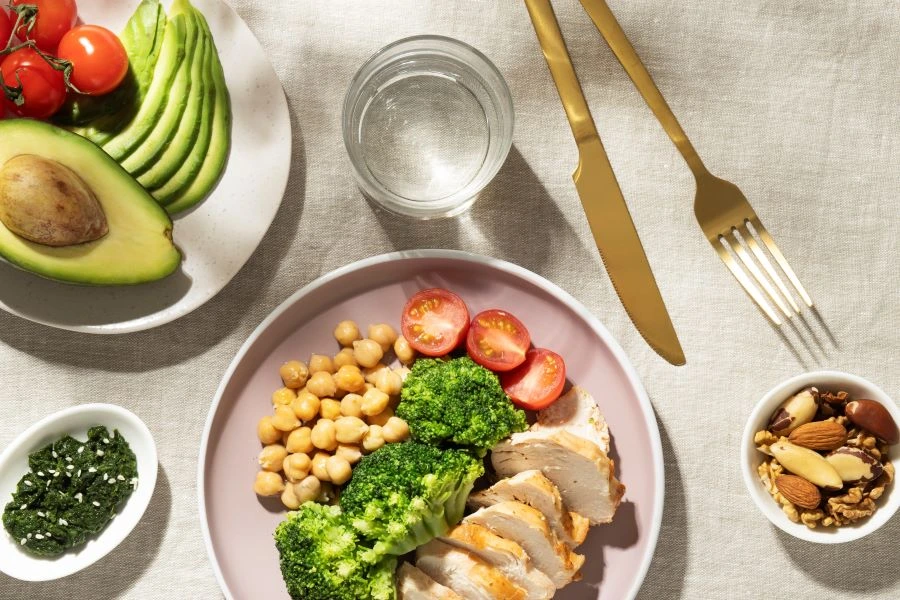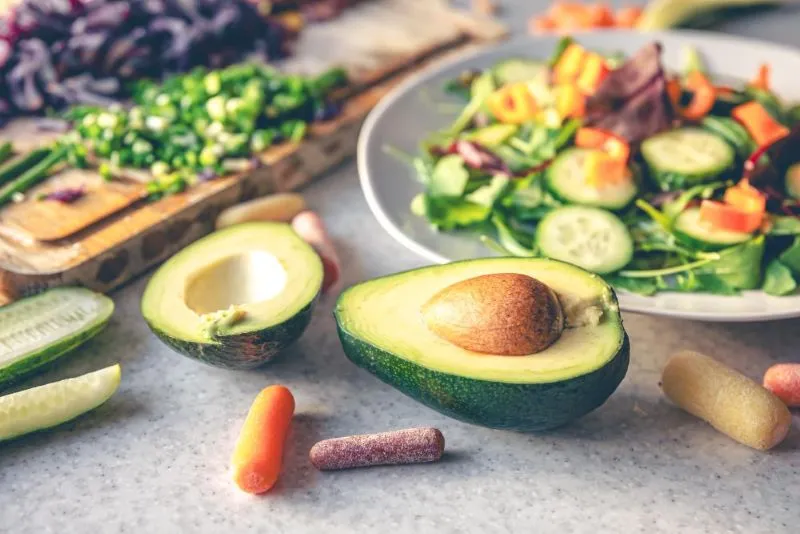Common Myths and Misconceptions About the Ketogenic Diet: Separating Fact from Fiction
Introduction
Imagine starting a diet only to quit weeks later because of conflicting advice. Sound familiar? You’re not alone. The ketogenic diet, a low-carb, high-fat eating plan, has skyrocketed in popularity—but so have the myths surrounding it. From “you’ll ruin your heart” to “keto flu is unavoidable,” misinformation runs rampant.
Here’s the truth: keto isn’t about chugging butter coffee or avoiding veggies forever. It’s a metabolic state called ketosis, where your body burns fat for fuel instead of carbs. But let’s cut through the noise. In this guide, we’ll dismantle the top 10 keto myths using peer-reviewed studies, real-world success stories, and actionable tips. Ready to learn what actually works? Let’s dive in.
(Internal link: For a beginner’s guide to ketosis, see Keto Diet Essentials: The Ultimate Guide.)
Myth #1: “Keto Means Eating Only Bacon and Butter”
The Reality:
Yes, keto emphasizes fats—but not just bacon and butter. Think avocados, olive oil, nuts, and fatty fish like salmon. These nutrient-dense fats provide omega-3s and vitamins, unlike processed meats.
Science Says:
A 2022 study in the Journal of Nutrition found that keto diets rich in unsaturated fats (think: avocados) improved heart health markers by 18% compared to saturated fat-heavy versions. Processed meats, however, raised LDL (“bad” cholesterol) in some participants.
What to Eat Instead:
- Healthy fats: Avocado, olive oil, nuts, seeds.
- Proteins: Grass-fed beef, wild-caught fish, pasture-raised eggs.
- Low-carb veggies: Spinach, broccoli, zucchini (yes, veggies are keto-friendly!).
Sample Meal:
Grilled salmon + avocado salad + olive oil dressing. (Need recipes? Check out Keto Meal Plans and Recipes.
Pro Tip:
Balance saturated fats with unsaturated ones. Your arteries will thank you.
Myth #2: “Keto Is Unhealthy Long-Term”
Short-Term vs. Long-Term:
Keto shines for short-term weight loss and blood sugar control. But what about years down the line? Research is mixed, but here’s the deal:
- Long-term risks: Nutrient deficiencies, elevated cholesterol (if relying on processed fats).
- Solutions: Cycle keto (e.g., 5 days keto, 2 days moderate carbs) or adopt a “keto-ish” approach with more flexibility.
Expert Insight:
Dr. Sarah Hallberg, a leading keto researcher, notes: “Long-term keto can work if you prioritize whole foods and monitor health markers.” Regular blood tests (cholesterol, kidney function) are key.
Who Should Avoid Keto?
- Those with kidney disease.
- Pregnant/nursing women.
- People with a history of eating disorders.
(External link: The Mayo Clinic advises consulting a doctor before starting keto.)
Myth #3: “You Can’t Build Muscle on Keto”
Fueling Workouts:
Carbs aren’t the only energy source. In ketosis, your body uses ketones and fat for fuel. While explosive movements (like sprinting) may suffer initially, endurance activities thrive on keto.
Case Study:
NBA star LeBron James used keto during the 2019 season to shed weight and improve recovery. His trainer reported a 7% body fat drop without muscle loss.
Muscle-Building Tips:
- Protein intake: Aim for 1.2–1.7g per kg of body weight.
- Strength train: Focus on compound lifts (squats, deadlifts).
- Electrolytes: Sodium, magnesium, and potassium prevent cramps.
Supplement Smartly:
- Whey protein isolate (low-carb).
- Creatine for strength gains.
(Internal link: Learn how to avoid cramps with Managing Keto Side Effects.)
Myth #4: “Keto Causes Nutrient Deficiencies”
Common Shortfalls:
- Magnesium: Found in spinach, pumpkin seeds.
- Potassium: Avocados, mushrooms.
- Fiber: Chia seeds, flaxseed, broccoli.
Fiber Fix:
| Food | Fiber per 100g |
|---|---|
| Chia seeds | 34g |
| Flaxseed | 27g |
| Broccoli | 2.6g |
Supplement Guide:
- Multivitamin: Covers baseline needs.
- Omega-3s: Combat inflammation.
- Electrolyte mix: LMNT or DIY (lemon juice + salt).
Pro Tip:
Fermented foods like sauerkraut boost gut health—critical on keto.
Myth #5: “Everyone Enters Ketosis the Same Way”
The Ketosis Spectrum:
Your carb tolerance depends on:
- Activity level: Athletes may handle 50g carbs/day.
- Metabolic health: Insulin-resistant individuals need stricter limits (<20g).
Testing Ketosis:
- Blood ketone meters: Most accurate (optimal range: 0.5–3.0 mmol/L).
- Urine strips: Cheap but unreliable after adaptation.
Adaptation Timeline:
| Week | Signs of Ketosis |
|---|---|
| 1 | Keto flu, fatigue |
| 2–3 | Increased energy, reduced hunger |
| 4+ | Stable ketosis, mental clarity |
(Internal link: Track progress with How Fast Can You Lose Weight on Keto?)

Common Myths and Misconceptions About the Ketogenic Diet: Separating Fact from Fiction
Myth #6: “Keto Is Just a Weight Loss Fad”
Beyond Weight Loss:
The ketogenic diet isn’t just a trendy way to shed pounds—it’s a century-old therapy with medical roots. Originally developed in the 1920s to treat epilepsy, keto has been shown to reduce seizures by 50% in drug-resistant patients. A landmark 2008 study in The New England Journal of Medicine found that children on keto experienced a 38% greater reduction in seizures compared to those on standard diets.
Modern Applications:
- PCOS Management: Keto improves insulin sensitivity, helping regulate hormones in women with PCOS. A 2020 study in Nutrition & Metabolism reported a 22% drop in testosterone levels among participants after 12 weeks.
- Mental Clarity: Ketones are a efficient brain fuel. Research in Neurobiology of Aging suggests keto may slow cognitive decline in early Alzheimer’s patients.
- Athletic Performance: Ultra-marathoners and cyclists use keto to tap into fat stores during endurance events.
Historical Context:
The diet’s origins trace back to fasting practices used in ancient Greece. Learn more in our deep dive: The History and Origins of the Ketogenic Diet.
Myth #7: “Keto Flu Is Inevitable”
What Is Keto Flu?
A collection of symptoms (fatigue, headaches, cramps) caused by electrolyte imbalances and carb withdrawal as your body adapts to ketosis.
Prevention Strategies:
- Hydration: Drink 3–4 liters of water daily.
- Electrolytes:
- Sodium: 5,000 mg/day (add salt to meals).
- Potassium: 3,500 mg/day (avocados, spinach).
- Magnesium: 400 mg/day (supplements or pumpkin seeds).
DIY Electrolyte Drink:
- 1 cup water
- ¼ tsp salt
- ¼ tsp Lite Salt (for potassium)
- Squeeze of lemon
How Long It Lasts:
| Symptom | Typical Duration |
|---|---|
| Fatigue | 3–5 days |
| Headaches | 2–4 days |
| Muscle Cramps | 1–3 days |
Pro Tip: Gradually reduce carbs over a week instead of going cold turkey. For a full guide, see Managing Keto Side Effects.
Myth #8: “All Carbs Are the Enemy”
Net Carbs vs. Total Carbs:
Net carbs = Total carbs – fiber – sugar alcohols. This is the number that matters for keto.
Smart Carb Choices:
| Food | Total Carbs | Fiber | Net Carbs |
|---|---|---|---|
| Raspberries (1 cup) | 15g | 8g | 7g |
| Dark Chocolate (85%) | 18g | 4g | 14g |
| Cauliflower (1 cup) | 5g | 2g | 3g |
Enjoy in Moderation:
- Berries (strawberries, blackberries).
- Dark chocolate (85% cocoa or higher).
- Nuts (pecans, macadamias).
Avoid:
- Hidden carbs in sauces, dressings, and processed “low-carb” snacks.
Common Myths and Misconceptions About the Ketogenic Diet: Separating Fact from Fiction
Myth #9: “Keto Ruins Your Social Life”
Dining Out Hacks:
- Burgers: Order lettuce-wrapped or bowl-style (no bun).
- Mexican: Fajitas with extra guac, hold the tortillas.
- Italian: Grilled chicken + zucchini noodles.
Alcohol Guide:
| Drink | Carbs per Serving |
|---|---|
| Dry red wine | 3–4g |
| Vodka soda | 0g |
| Light beer | 3–6g |
Pro Tip: Eat a keto-friendly snack (like olives or cheese) before events to avoid temptation.
Myth #10: “You’ll Regain All Weight After Stopping Keto”
The Truth About Weight Regain:
A 2021 study in Obesity found that participants who transitioned gradually from keto to a moderate-carb diet maintained 85% of their weight loss after one year. The key? Avoid reverting to old eating habits.
Transition Plan:
- Week 1–2: Add 10g carbs daily (e.g., sweet potato or quinoa).
- Week 3–4: Increase to 50g carbs, focusing on whole foods.
- Maintenance: Use tools like intermittent fasting (see Comparing Keto to Other Diets) or carb cycling.
Maintenance Strategies:
- Track macros with apps like Cronometer.
- Weigh yourself weekly to catch fluctuations early.
How to Start Keto the Right Way
Step 1: Calculate Your Macros
| Weight | Protein (g/day) | Fat (g/day) | Carbs (g/day) |
|---|---|---|---|
| 150 lbs | 75–90g | 120–140g | <20g |
| 200 lbs | 100–120g | 150–170g | <20g |
Use our Keto Macro Calculator for precision.
Step 2: Pantry Overhaul
- Toss: Sugary snacks, grains, and vegetable oils.
- Stock Up: Coconut oil, almond flour, and canned sardines.
Step 3: Track Progress
- Apps: Carb Manager, MyFitnessPal.
- Metrics: Weight, waist circumference, energy levels.
(Internal link: For meal ideas, explore 7-Day Keto Meal Plan.)
FAQs About the Ketogenic Diet
Q: “Is keto safe for diabetics?”
A: Yes—under medical supervision. A 2019 Diabetes Therapy study found keto reduced HbA1c by 1.3% in type 2 diabetics. Always monitor blood sugar and adjust meds with your doctor.
Q: “Can I drink coffee on keto?”
A: Absolutely! Add butter or MCT oil for a bulletproof coffee boost. Avoid sugary creamers.
Q: “How do I know I’m in ketosis?”
A: Signs include metallic breath, increased thirst, and sustained energy. For accuracy, use a blood ketone meter.
Conclusion
The ketogenic diet isn’t a one-size-fits-all solution, but it’s far from the dangerous, bacon-obsessed fad critics claim. By prioritizing whole foods, balancing fats, and staying informed, you can harness keto’s benefits—whether for weight loss, mental clarity, or metabolic health.
Ready to Start?
Grab our FREE 7-Day Keto Meal Plan packed with recipes and shopping lists. And don’t forget to consult your healthcare provider before making major dietary changes.
Final Thought:
“Keto isn’t a diet; it’s a metabolic tool. Use it wisely, and the results can be life-changing.” — Dr. Eric Westman, Duke University.


